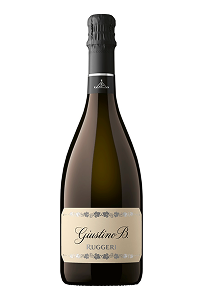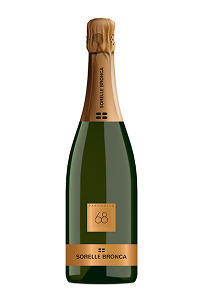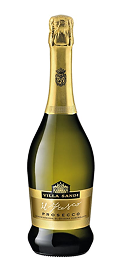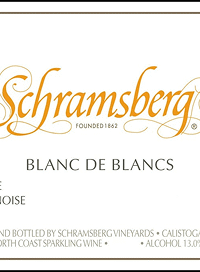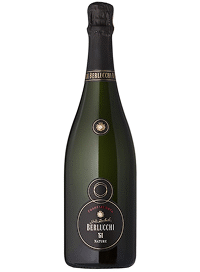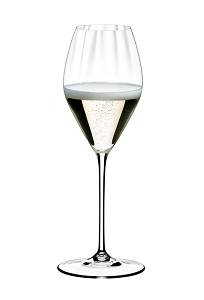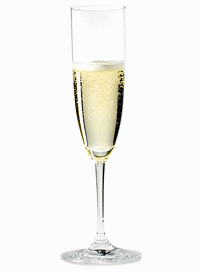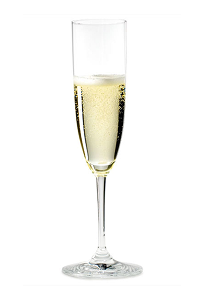Prosecco wine: top picks for 2025
Prosecco wine is Italy’s sparkling sensation and in 2025, it’s more popular than ever! This guide covers the main Prosecco styles, their signature flavor profiles and how to pair them with food.

By
Last updated:
Table of Contents
Best Prosecco bottles to buy for the festive season
Cartizze Prosecco Superiore – Bisol 2024
Italy
Superiore di Cartizze Vigna La Rivetta – Villa Sandi 2023
Italy
Giustino B. Prosecco Extra Dry Superiore – Ruggeri 2022
Italy
Prosecco di Valdobbiadene Particella 68 Extra Dry – Sorelle Bronca – Non Vintage
Italy
Prosecco Superiore Brut – Borgoluce – Non Vintage
Italy
Valdobbiadene L’Ovest Prosecco Superiore Extra Dry – Sorelle Bronca – Non Vintage
Italy
Mas de Fer Rive di Soligo Prosecco – Andreola – Non Vintage
Valdobbiadene Prosecco Superiore – LaLuca – Non Vintage
Italy
Col del Forno Prosecco – Andreola – Non Vintage
Rustico Valdobbiadene Prosecco Superiore – Nino Franco – Non Vintage
Italy
Our 10 best Prosecco wines reflect expert tasting and trusted Prosecco reviews by names like James Suckling and Robert Parker. Other criteria include real customer feedback, production methods and terroir driven expressions to ensure that our ranking reflects bottles that have reached the widest consensus amongst our readers.
Prosecco wine at a glance
| Attribute | Details |
|---|---|
| Grape Variety | Glera (min. 85%), with Bianchetta, Perera, Verdiso and other local grapes |
| Origin | Veneto and Friuli-Venezia Giulia, Italy |
| Serving Temperature | 43-46°F (6-7°C) |
| Decanting | Not recommended. Serve chilled and fresh to preserve effervescence |
| Aging Potential | 1-2 years. Select DOCG bottles may age up to 5 years |
| Flavor Profile | Green apple, pear, white peach, citrus, floral notes |
| Structure | Light-bodied, low tannins, high acidity |
| Alcohol Content | 10.5% to 11.5% ABV |
| Ideal Glass | Tulip-shaped sparkling wine glass (enhances aroma more than a flute!) |
| Food Pairing | Seafood, sushi, antipasti, mild cheeses, fresh fruit, prosciutto |
| Top Communes | Valdobbiadene, Conegliano, Asolo, Cartizze |
| Notable Producers | Nino Franco, Adami, Bisol, Trevisol & Figli, Villa Sandi |
Prosecco’s fresh flavor profile features green apple, pear and floral notes, pairing incredibly well with seafood and sushi. Additional common tasting notes include citrus zest, which brings to mind aromas of lemon and grapefruit, as well as white peach, acacia and wisteria flowers, rounded off by a crisp minerality.
Aged DOCG Proseccos develop a richer texture and complex notes of toasted almond, hints of brioche and honey, offering a more refined experience than younger bottles.
Read on to learn more about Prosecco and how factors like brands, grape blends, terroir and ideal serving conditions influence its taste, structure and food pairings.
Best Prosecco brands worth exploring
Some of the best Prosecco brands include 500 year old wine estate Bisol, as well as Andreola and Mionetto. These producers have crafted a legacy of high quality Prosecco wines, making them widely loved among wine critics and enthusiasts alike. Come along as we journey through their history and learn how they came to be so respected.
Bisol Winery – Valdobbiadene, Italy
The history of Bisol winery tells the story of a family with a 500 year old passion for Prosecco wines, dating back to the Valdobbiadene countryside in 1542. The winemaking business started by Eliseo Bisol came to a temporary halt during World Wars I & II, but it was revived by his son Desiderio. Lovingly known as Jeio by his family, Desiderio drove all over the hills of Conegliano and Valdobbiadene to find and purchase the best plots of land for growing the ideal Glera grapes that perfectly capture terroir. Today, their vineyards extend over 100 hectares of land in the Valdobbiadene Prosecco Superiore DOCG and they are reputable for offering a variety of wines without compromising on quality or taste.
Crede Prosecco Superiore 2024 – Bisol – Italy
Villa Sandi – Veneto, Italy
The history of the Villa Sandi winery began in the early 1920s, when Mario Polegato bought some vineyards and decided to become a winemaker. After decades of hard work, by the end of the 1970s, Mario, together with his grandson Giancarlo, bought the Palladian style Villa Sandi. They started restoration work and brought the building back to life making it the headquarters for the winery. At the beginning of the 1980s, they were the first to produce internationally appreciated Prosecco, leading the export sector to this day. In 2010, their Cartizze La Rivetta received the prestigious Tre Bicchieri award from Gambero Rosso. Villa Sandi is now led by Giancarlo and his family who continue to expand and innovate even as they uphold age-old winemaking traditions.
Il Fresco Prosecco – Villa Sandi – Italy – Non Vintage
Tasting notes: Dry, fresh and sweet with notes of golden apples, honeysuckle and acacia.
Sorelle Bronca – Veneto, Italy
Antonella and Ersiliana Bronca inherited vineyards and a passion for winemaking from their father, Livio, leading to their establishment of Sorelle Bronca in the mid 1980s. The winery is known for its high quality, organically produced sparkling wines from vineyards planted on steep hillside plots. The sisters were pioneers of sustainable agriculture in the region and today they have been joined by Elisa, Ersiliana’s daughter, as well as Piero, Antonella’s husband, to manage the winery.
Particella 232 Rive di Farro Prosecco di Valdobbiadene Superiore Extra Brut – Sorelle Bronca – Italy – Non Vintage

What is Prosecco wine?
Prosecco is a high quality Italian sparkling wine made primarily from the Glera grape. It is produced in northeastern Italy, in areas with two main classifications:
- DOC (Denominazione di Origine Controllata): covers a broad production area; typically more volume driven.
- DOCG (Denominazione di Origine Controllata e Garantita): indicates stricter production rules, including hand harvesting and limited yields.
What makes it unique among sparkling wines? Let’s see its top strengths:
- It has a light character, making it typically feel softer on the palate than Champagne or Cava.
- Its gentle bubbles, also called perlage, create a creamy and easy drinking effervescence.
- Prosecco wines are quite versatile, made in varying sweetness levels from Extra Brut to Dry.
Unlike traditional method sparkling wines, which undergo a second fermentation in the bottle, Prosecco is made using the Charmat method. Here, the second fermentation happens in large tanks, resulting in a wine prized for its freshness, vibrancy and everyday drinkability.
How is Prosecco made?
Most traditional sparkling wines, such as Champagne and Franciacorta, are made by subjecting the base wine to a secondary fermentation process in the bottle. However, Prosecco is not like that! This sparkling wine is produced using a unique method, known as the Charmat or Martinotti method. In this section, we’ll provide a breakdown of the steps involved in making Prosecco from start to finish.
- First, the base wine has to be produced. Winemakers harvest Glera and other permitted grape varieties, including Bianchetta Trevigiana, Verdiso and Perera at peak ripeness, usually in September.
- The selected grapes are transported to the winery, where they undergo a gentle pressing to extract the juice or “must”. The must is separated from the grape skins and solids, then filtered and clarified. Afterward, it is left to settle in steel tanks kept at approximately 57°F(14°C). This phase is very important, as it preserves the wine’s freshness and organoleptic properties.
- Following the pressing phase, the soon to be Prosecco undergoes its first fermentation. Natural yeasts are added to the juice in stainless steel tanks, which is kept that way for several weeks to allow the conversion of the grape sugars to alcohol, giving the “base wine”.
- Secondary fermentation is a delicate phase that determines the quality of the end wine. Here, producers ferment the base wine in large steel pressurized vats or tanks, adding both natural and selected yeasts. This process can last as long as six months, during which carbon dioxide and alcohol are formed. The carbon dioxide is trapped in the wine under pressure, making it sparkling.
- Filtering, clarifying and bottling: after the second fermentation, the wine is clarified and passed through filters. Winemakers may add some sugar to achieve the desired sweetness levels before bottling the finished Prosecco for your enjoyment!
Types of Prosecco wine and what sets them apart
Although Prosecco is traditionally recognized as a white sparkling wine, its range has expanded in recent years to include styles like rosé Prosecco. Both are based primarily on the Glera Prosecco grapes but differ in terms of blending, structure and aromatic profile.
Prosecco sparkling wines are available in various sweetness levels that we have conveniently chartered in the table below:
| Type of Prosecco Wine | Sweetness Level | Amount of Residual Sugar |
|---|---|---|
| Extra brut | Very Dry | 6 g/L |
| Brut | Dry | 12 g/L |
| Extra Dry | Lightly Off Dry | 12-17 g/L |
| Dry | Fruity and Slightly Sweet | 17-32 g/L |
The majority of high quality types of Prosecco fall into the Brut or Extra Dry category, offering the ideal balance of fruitiness and acidity.
On the other hand, rosé Prosecco was officially approved in 2020. It combines Glera with 10-15% Pinot Noir, lending a pink hue and flavors of red berries, rose petals and citrus. By regulation, it must be labeled Millesimato (vintage dated) and aged at least 60 days on lees. Like its white counterpart, pink Prosecco is typically produced in Brut or Extra Dry styles.
Is there such a thing as non-alcoholic Prosecco?
Non alcoholic Prosecco is real and some bottles are great for sipping on their own or for use in cocktails! But how does it work?
- The wine undergoes traditional fermentation from Glera grapes.
- The alcohol is removed using vacuum distillation or reverse osmosis.
- Post dealcoholization, CO₂ is reintroduced to ensure refreshing effervescence.
This process retains essential aromas while lowering Prosecco alcohol content to under 0.5% ABV. Expect lighter body, crisp acidity and notes of green apple and citrus but without the depth of aged Prosecco DOC or DOCG.
Mionetto Prosecco – Alcohol Removed
Non alcoholic Prosecco pairs well with light appetizers like canapés, mini quiches, fresh salads and smoked salmon. Its crisp acidity also makes it a great match for salty and fried foods, as it balances and cuts right through them. Consider a tangy goat cheese or Gouda for cheese pairing options, or a prosciutto paired with Italian breads and olive oil for an Italian inspired cuisine.
What makes the price of a Prosecco bottle rise?
Prosecco price remains one of the most attractive features of this Italian sparkling wine, making it accessible without sacrificing quality. A Prosecco price comparison will show you that while there are many budget friendly bottles, there is also a world of bottles that command a hefty price tag. The cost can vary considerably depending on the rarity of the terroir on which the grapes were planted and the level of craftsmanship and attention to detail that was involved in creating the wines. Some Proseccos from exceptional vintage years also command high prices, as well as exceptional bottlings as a result of collaborations with renowned designers.
For collectors, Prosecco might seem unconventional compared to aged vintage Champagnes but there is now a growing niche market. Collectors are drawn by:
- Prosecco’s freshness combined with its mid term aging potential; and
- The rarity of certain vintages and vineyard designations.
To better understand how these factors influence the cost of Prosecco wine, see the reference table below.
| Wine / Main Grape | Prosecco & Producer | Rating | Price Range |
Tasting Notes |
|---|---|---|---|---|
| Entry Level Prosecco | Ruggeri Giustino B. Prosecco Extra Dry Superiore 2023 – Italy | 4,8/5 | 30$ – 40$ | Golden apple, white peach, citrus zest and acacia blossom. |
| Mid Tier Prosecco | Nino Franco Grave di Stecca Prosecco 2010 – Italy | 4,9/5 | $40 – $65 | Ripe pear, toasted almond, subtle honey and a creamy texture. |
| Single Vineyard Prosecco | Villa Sandi Superiore di Cartizze Vigna La Rivetta 2021 – Italy | 5/5 | $65 – $100 | Aromas of pear, wildflowers, stone fruits and a whisper of pastry. |
| Premium Prosecco Bottle | Trevisol & Figli Flor Prosecco (Non-vintage) – Italy | 5/5 | $200 – $300+ | Layers of citrus oil, wild herbs, saline minerality and white truffle. |
Top alternatives to Prosecco for connoisseurs
While Prosecco offers excellent value at accessible prices, it is really up for aging. However, Italy is also home to some premium wines similar to Prosecco that are exceptional high-end alternatives. Here is our top selection:
1. Ferrari Giulio Ferrari Riserva del Fondatore 2010 – Italy
2. Schramsberg Blanc de Blancs 2021 – California
3. Ferghettina Franciacorta Rosé 2020 – Italy
4. Berlucchi \’61 Franciacorta Brut Nature 2012 – Italy
5. Veuve Clicquot Yellow Label Brut – France
These bottles are perfect for collectors and enthusiasts who would prefer sparkling wines with more depth and layered flavors compared to Prosecco.
While Vintage Champagne gets aging praise, Prosecco is often dismissed as cheap and everyday. Yet in Conegliano Valdobbiadene, top producers are making refined, age worthy Proseccos. It’s not collector level yet, but a quiet renaissance may be underway.
Prosecco wine vintage chart: how the years affect the quality
Prosecco is generally intended for early consumption, with most bottles showing best within one or two years of release. However, certain DOCG wines, especially those from Cartizze or Conegliano Valdobbiadene vineyards, can hold up well for up to 3-5 years.
With short term aging, you may notice changes in texture and secondary aromas such as dried fruit and toasted nuts. While it doesn’t have the long aging potential of Champagne, premium bottles from the best Prosecco vintages show solid structure and aging stability.
The Prosecco vintage chart below identifies the best years to look out for.
| Vintage | Recommended Prosecco Wine | Vintage Characteristics |
|---|---|---|
| 2023 | Prosecco Valdobbiadene Superiore Brut 2023 – Biancavigna – Italy | The spring rain and hailstorms led to late ripening of the grapes. However, favorable day to night temperatures resulted in balanced wines. |
| 2022 | Millesimato Prosecco Superiore di Conegliano 2022 – Canella – Italy | Hot and dry summer that led to early harvest. Resulted in riper fruit, lower acidity and fuller body. |
| 2021 | Prosecco Superiore Valdobbiadene Col Credas 2021 – Adami – Italy | Considered an exceptional year with ideal weather conditions that produced a yield with excellent balance between acidity and ripeness. |
| 2020 | Extra Dry Prosecco Superiore 2020 – Col de Salici – Italy | Balanced year with good rainfall and sunshine. Very approachable vintage that produced round, aromatic wines. |
3 Essential tips to serve Prosecco as a beginner
Prosecco is a straightforward wine for beginners thanks to its low alcohol, fresh taste and good value. Here are 3 practical tips for getting started:
- Choose non vintage bottles as they are more fruit forward and easy to drink.
- Serve it cold at 43-46°F or 6-7°C; this temperature balances the Prosecco ABV and highlights freshness.
- Pair with light food such as seafood, sushi or fresh cheese work best. Avoid rich dishes.
Bonus tip: try the mini Prosecco bottles first! They are ideal for tasting different styles without committing to a full bottle.
Use the following guide to match food with the right Prosecco style and age:
| Prosecco Style | Our Recommendation | Best to Pair with |
|---|---|---|
| Non vintage Prosecco (NV | Bosco di Gica Prosecco Superiore – Adami – Italy | Sushi, grilled vegetables, mild cheeses. |
| Aged Prosecco (DOCG, 3-5 yrs) | Gancia Prosecco Rosé 2019 – Italy | Duck breast, seafood tagliatelle, hard cheeses. |
Which Prosecco glasses should I use?
Despite its iconic status, the flute is not always the best glass for enjoying Prosecco. While it preserves the bubbles, it restricts the wine’s aromatic expression, especially in higher quality DOCG or aged bottles. A wider tulip or standard white wine glass allows the aromas to fully emerge.
If you do prefer a flute, opt for one that isn’t too narrow, so the aromas have room to develop. You will find some examples of the right Prosecco glasses in our table below:
Riedel Performance Champagne Glasses (Set of 2) 13oz – 10 inches
Riedel Vinum Champagne Flutes (Set of 2) 5.5-8 oz – 8 inches
Riedel Vinum Champagne Flutes (Set of 2) 8oz – 8,7 inches
Where is the Prosecco producing region in Italy?
The Prosecco producing region is located in northeastern Italy, specifically within Veneto and Friuli Venezia Giulia. Globally, this area is recognised as the official Prosecco region, covering over 24,000 hectares of land and several vineyards. By law, only sparkling wines produced in this designated area can be called Prosecco.
Here is a look at the key communes known for producing the best Italian Prosecco:
- Valdobbiadene is located in Veneto, specifically within the Treviso province. This town is a UNESCO World Heritage Site known for producing high quality Prosecco with high acidity and refined bubbles. Its wines show the most minerality and aging potential.
- Conegliano is also in Treviso province, a hilly countryside with a slightly warmer climate. Conegliano is also home to Italy’s oldest winemaking school, with steep vineyards on which the Glera grapes are grown. In Conegliano, winemakers often produce Prosecco Superiore DOCG wines or Rive wines, which are made from grapes grown in the most unique and steepest single vineyards.
- Asolo also tends to focus on Prosecco Superiore DOCG crafted from Glera, Bianchetta and other local varieties. Located near the Dolomites, the region is dotted with smaller family owned wineries and Asolo wines can often age for several years and still retain freshness.
These DOCG areas represent the pinnacle of Prosecco Italy production, offering the most terroir driven and age worthy expressions.
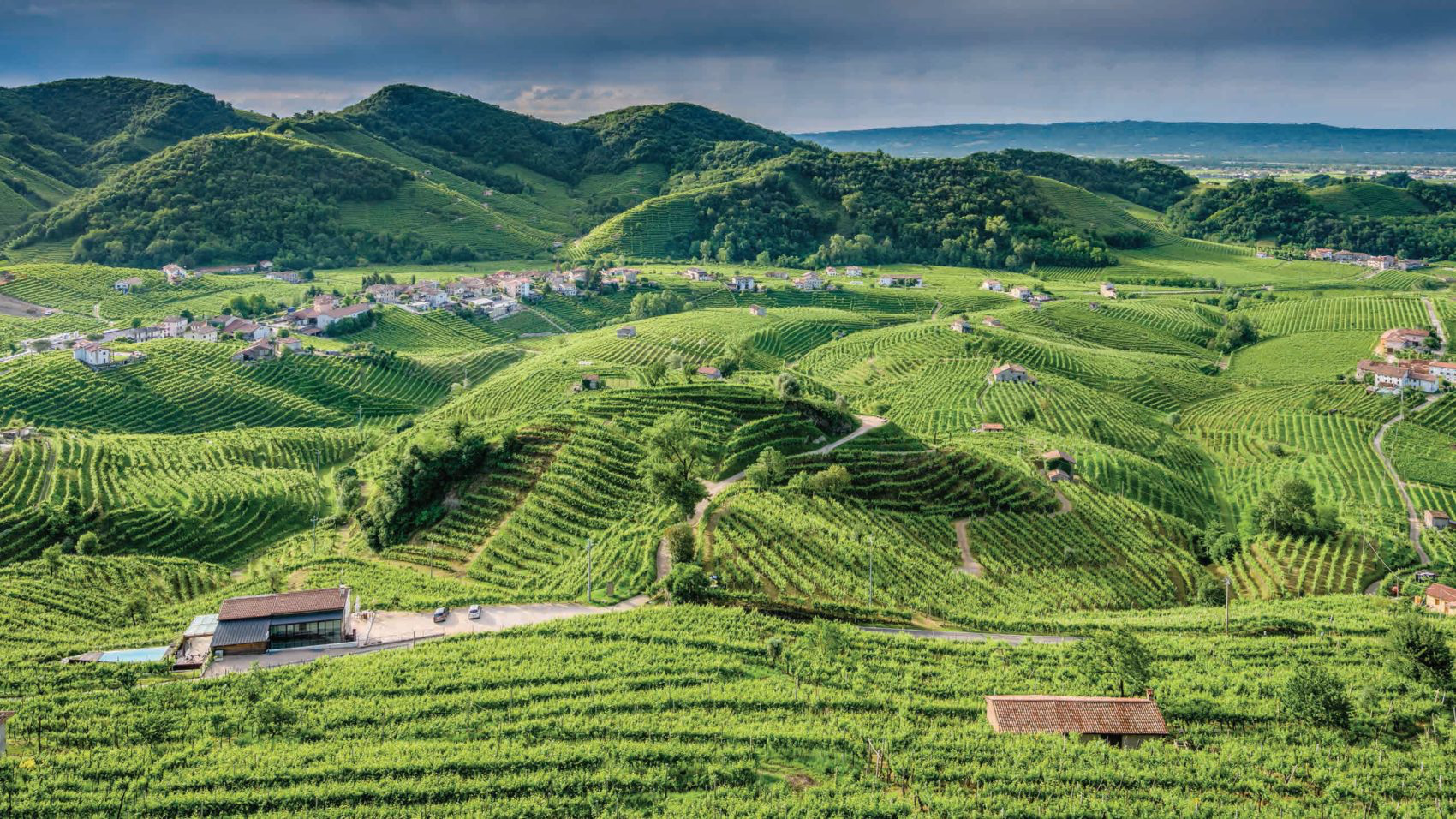
How does Prosecco stack up against other bubbles?
Many consumers confuse white sparkling wines, assuming they all belong to the same category. Is Prosecco bubbly? Yes. But is Prosecco Champagne? Absolutely not! Prosecco is a distinct style of its own. Here’s a clear breakdown of how Prosecco compares to other popular sparkling wines:
- Prosecco vs Champagne
Prosecco is fruitier, lighter and more affordable. Champagne is French, made using Chardonnay, Pinot Noir and Pinot Meunier. It’s richer, toastier and more complex. - Spumante vs Prosecco
Spumante simply means “sparkling” in Italian and refers to any fully sparkling wine. So, all Prosecco is Spumante but not all Spumante is Prosecco. The same logic applies to sparkling wine vs Prosecco. - Cava vs Prosecco
Cava is a Spanish sparkling wine, made mainly in Catalonia with local grapes like Macabeo and Parellada. Compared to Prosecco, Cava is often drier, earthier and more structured.
The last point to clear up is the common confusion between Brut vs Prosecco. Brut isn’t a type of wine: it’s a dryness level, meaning the wine has less than 12 g/L of sugar. Prosecco can be Brut, but it also comes in other styles like Extra Dry, Extra Brut and Dry.
Next, we’ll introduce a comparison table of these wines to help you explore beyond the basics.
| Wine /Grape | Top Wine & Producer | Wine Style |
|---|---|---|
| Champagne vs Prosecco (Pinot Noir, Chardonnay) |
Champagne PR 19/90 – Henri Giraud, 1990 – France | Champagne has a more complex, creamy or bready flavor than Prosecco with layered tasting notes. |
| Cava vs Prosecco (Macabeo, Xarel-lo, Parellada) |
Reserva Brut Nature Cava 2019 – Avinyo — Spain | Cava is often crispier and toastier than Prosecco, requiring some aging to develop complex flavors. |
| Asti Spumante vs Prosecco (100% Moscato) |
Spumante Dosaggio Zero 2020 – ColleStefano – Italy | Asti Spumante is sweeter than Prosecco. It is also aromatic and low alcohol with dominant fruity and floral notes. |
| Franciacorta vs Prosecco (Chardonnay) |
Franciacorta Rosé – Contadi Castaldi – Italy | Franciacorta offers richer and toastier flavors like lemon, peach and almond, which are often absent in Prosecco. |
How to drink Prosecco in 3 simple steps
Knowledge of how to serve Prosecco properly can highlight the most delicate tasting notes and elevate your drinking experience. The right temperature, the right serving equipment and a positive attitude are all you need!
To serve Prosecco like a pro;
- Store it in a dark place at around 50–55°F (10-12°C) with the bottle standing up.
- Serve it well chilled, ideally between 38–45°F (3-7°C) depending on the style.
- Do not decant! This would cause a loss of effervescence.
And when it comes to how to open Prosecco, always point the bottle away from people: the pressure inside can cause the cork to pop unexpectedly. Start by removing the foil and loosening the wire cage while keeping a thumb firmly over the cork. Hold the bottle at a slight angle, grip the cork gently and rotate the bottle (not the cork) until you feel the pressure begin to push it out on its own. Let it release with a soft, controlled sigh rather than a loud pop in order to preserve the bubbles!
Elevated Prosecco food pairings
Forget the old cliché that Prosecco only pairs with aperitivo snacks. To get the most from this wine, you need to match its acidity, body and sugar level to the dish.
This guide breaks it down with practical examples of Prosecco food pairing. No fluff, just matches that work!
| Food | Best Prosecco Bottle | ABV | Type & Structure |
|---|---|---|---|
| Seafood Risotto or Pasta | Ruggeri Giall’oro Prosecco Superiore Extra Dry – Italy | 11.5% | Light bodied with crisp acidity and fresh notes of citrus and green apple. |
| Fried Seafood, Calamari, Tempura | La Marca Prosecco – Italy | 11.2% | Easy and soft with aromas of chalk, flowers and apples. |
| Fresh cheeses (Burrata, Ricotta, Feta), Canapes | Le Colture Fagher Prosecco Superiore Brut – Italy | 11.5% | Smooth and round textured with notes of honey, white flowers and crushed stone. |
| Summer salads, Crudités, Poke Bowls | Carpene Malvolti “1868” Extra Dry Prosecco | 11% | Elegant, floral and fruity fragrances with a slight hint of sweet almond. |
| Fish Tartare, Sushi, Light Carpaccio | SYLTBAR Mr. Prosecco – Italy | 11.5% | Refreshing flavors of tart apples, lemon and white peach with a brisk minerality. |

FAQs on Prosecco wine
What is the top rated Prosecco?
The top-rated Prosecco is the Cartizze Prosecco Superiore 2024 by Bisol. This wine has received several notable awards, including the Prestigious Grand Master title at the Prosecco Masters 2025, as well as a 92 point rating from James Suckling. Among other top rated Proseccos, Villa Sandi’s Superiore di Cartizze Vigna La Rivetta 2023 consistently earns high praise for its elegance, balance and persistent fine bubbles, having received a 93 point score from Wine Spectator and Wine Enthusiast. The wine is also known for its consistency, as the Cartizze La Rivetta has previously won the highest possible “Tre Bicchieri” award from Gambero Rosso for 14 consecutive years
What kind of wine is Prosecco?
Prosecco is a kind of Italian sparkling white wine primarily made from Glera grapes. It’s produced using the Charmat method, which ferments the wine in pressurized tanks to preserve fresh, fruity aromas. Most Prosecco is light, aromatic and gently bubbly (frizzante or spumante) and it’s classified under DOC or DOCG designations.
Is Prosecco sweet?
Prosecco can range in sweetness. Most bottles are Brut or Extra Dry, meaning they’re relatively dry but can have a touch of residual sugar. Brut has under 12 g/L of sugar, while Extra Dry ranges from 12–17 g/L. So, while fruity, most Prosecco is not overly sweet to taste.
Is Prosecco the same as Champagne?
No, Prosecco and Champagne are not the same. Champagne is French, made using a different method (Traditional method) and grapes like Chardonnay and Pinot Noir. Prosecco is Italian, made with Glera grapes via the Charmat method. It’s typically lighter, fruitier and more affordable than Champagne.
How many calories are in Prosecco?
A standard 5 oz glass of Prosecco contains about 80-100 calories, depending on the sweetness level. Brut Prosecco tends to be lower in calories than sweeter styles like Dry or Demi Sec. The alcohol content and residual sugar both influence total calorie count per glass.
How many carbs are in Prosecco?
Prosecco typically contains 1.5 to 4 grams of carbs per 5 oz serving, depending on the style. Brut Prosecco has the fewest carbs, while sweeter styles like Extra Dry or Dry may contain slightly more. It’s considered a relatively low carb alcoholic beverage.
What does Prosecco taste like?
Prosecco tastes light, crisp and fruity, often showing notes of green apple, pear, melon, citrus and white flowers. The bubbles are fine and refreshing. Some styles can have hints of almond or yeast, especially in higher-end DOCG bottles. Overall, it’s approachable and aromatic.
Is Prosecco gluten free?
Yes, Prosecco is naturally gluten free. It’s made from grapes and does not involve any gluten-containing ingredients or additives during production. However, always check the label or contact the producer if you have celiac disease or a severe gluten sensitivity, to confirm no contamination risk.
How to open a bottle of Prosecco?
Always point away from people, as pressure can cause accidents. To open a Prosecco bottle safely: 1. Chill it to reduce pressure. 2. Remove the foil and loosen the cage. 3. Hold the cork firmly while twisting the bottle (not the cork). 4. Gently ease the cork out with a soft “pop.”
Should Prosecco be chilled?
Yes, Prosecco should be served well chilled, ideally at 38-45°F (3-7°C). Chilling enhances its crispness and helps maintain the bubbles. Store it in the fridge for a few hours before serving or use an ice bucket for quick cooling. Never serve it warm; it loses its freshness.
How long does Prosecco last after opening?
Once opened, Prosecco lasts about 1 to 3 days if properly resealed and refrigerated. Use a sparkling wine stopper to retain bubbles. After the third day, it generally becomes flat and loses its aromatic freshness. For best results, finish the bottle within 24 hours of opening.


